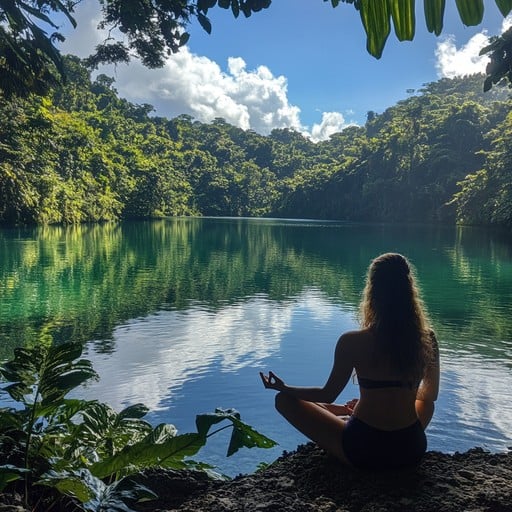Ruhe täglich: Embracing Daily Calmness in Our Lives
The Importance of Daily Tranquility
In our fast-paced world, finding moments of **ruhen täglich** can greatly enhance our mental and emotional well-being. Incorporating daily practices that encourage calmness helps to reduce stress, enhances productivity, and promotes a positive mindset. By prioritizing daily tranquility, individuals can build resilience against the chaos of everyday life. Whether through meditation, yoga, or quiet reflection, creating a peaceful routine leads to a deeper sense of self-awareness and satisfaction.
The Role of Mindfulness
Mindfulness is a powerful technique that fosters **daily relaxation** by encouraging individuals to embrace the present moment without distractions. Engaging in mindfulness practices, such as **mindful breathing** or guided imagery, allows individuals to cultivate a sense of peace. For instance, consider taking a few minutes each day to focus on your breath, letting go of any tension that may have built up. Regular practice of mindfulness can gradually transform your mindset, making it easier to handle everyday challenges.

Creating a Calm Environment
Your surroundings play a critical role in promoting **serenity**. Creating a peaceful environment at home or in your workspace can be essential for fostering relaxation. Simple changes, such as decluttering, incorporating nature elements, or using calming scents, can significantly enhance the atmosphere of your space. For example, adding plants or an essential oil diffuser can bring a refreshing essence that encourages a calm, daily mindset.
Techniques for Daily Calmness
Many effective techniques can help individuals implement **calmness** into their daily routines. Here, we will explore some simple yet impactful practices that anyone can adopt. By dedicating just a few minutes each day to these techniques, you will likely start to notice a shift in your mental clarity and overall emotional health.
Meditation Practices
One of the most recognized methods for achieving daily calmness is meditation. This ancient practice involves focusing the mind and eliminating distractions. Starting with just five minutes a day, you can gradually increase your meditation time as you grow more comfortable. Try to find a quiet space, free from interruptions, and focus on your breathing. Over time, meditation can significantly lower anxiety levels and enhance well-being.
Physical Activity and Serenity
Integrating physical activity into your daily routine is another excellent way to promote **calmness**. Gentle exercises such as yoga and tai chi can enhance physical fitness while simultaneously providing mental peace. For example, practicing yoga regularly creates not only physical flexibility but also emotional resilience. Pairing movements with mindful breathing aligns both body and spirit, creating a profound sense of tranquility.

Visualization Techniques
Using **visualization techniques** can transport your mind to calm and peaceful environments, aiding in relaxation. Picture a serene place, perhaps a tranquil beach or a lush garden; immerse yourself in the sights, sounds, and feelings that place evokes. Practicing visualization can be a powerful tool for relieving stress, improving focus, and enhancing daily calmness.
Building a Routine for Calmness
Establishing a daily routine focused on calmness requires consistency and dedication. By setting aside time each day to practice **relaxation methods**, you create a sanctuary for your mind and spirit. Consider the following steps to build a successful routine that encourages peace and mindfulness.
Creating Time Blocks
Allocating specific time blocks in your schedule can greatly enhance your ability to maintain daily routines of relaxation. Identify portions of your day that can be dedicated to mindfulness practices, whether it’s the early morning, lunchtime, or just before bed. Consistency is key, and developing a dedicated time will reinforce the habit and make it easier to integrate.
Engaging in Community Activities
Participating in community activities focused on mindfulness, such as group meditation sessions or yoga classes, can also enrich your daily practice. Engaging with others provides motivation and allows for shared experiences that deepen the understanding of relaxation techniques. The social aspect often leads to deeper connections with like-minded individuals, enhancing both personal and communal well-being.
Key Takeaways
- Embracing daily tranquility promotes mental and emotional health.
- Incorporating mindfulness techniques enhances overall well-being.
- Creating a calm environment is essential for fostering peace.
- Establishing a consistent routine helps reinforce relaxation practices.
- Engaging in community mindfulness can enhance your journey to tranquility.
FAQ
1. How long should I meditate each day for effective calmness?
Starting with just five minutes of meditation can be effective for beginners. Gradually, you can increase your time as you grow more comfortable with the practice. Aim for a maximum of 20-30 minutes for deeper benefits, depending on your schedule and lifestyle.
2. What are some easy exercises I can do for daily tranquility?
Gentle exercises like yoga and tai chi are excellent for promoting relaxation. Simple stretches that focus on breathing can also create a calming effect and help clear your mind.
3. How can I create a calming environment at home?
Decluttering your space, using soft lighting, incorporating plants, and utilizing calming scents such as lavender can significantly enhance your home environment, fostering a sense of peace.
4. What benefits can visualization provide for daily calmness?
Visualization techniques help transport your mind to calming settings, providing a mental escape that can aid relaxation. Engaging all senses during visualization allows for greater immersion and a more profound sense of serenity.
5. Is it beneficial to practice mindfulness in a community setting?
Yes, practicing mindfulness in groups can enhance motivation and provide social support. Sharing experiences with others often leads to deeper understanding and emotional connections, enriching your mindfulness journey.
